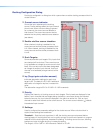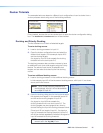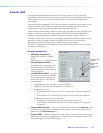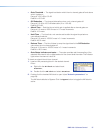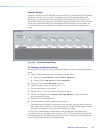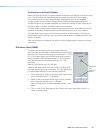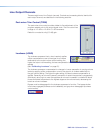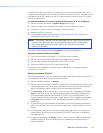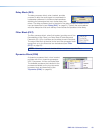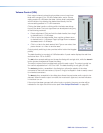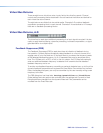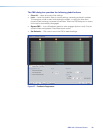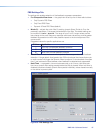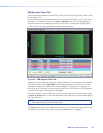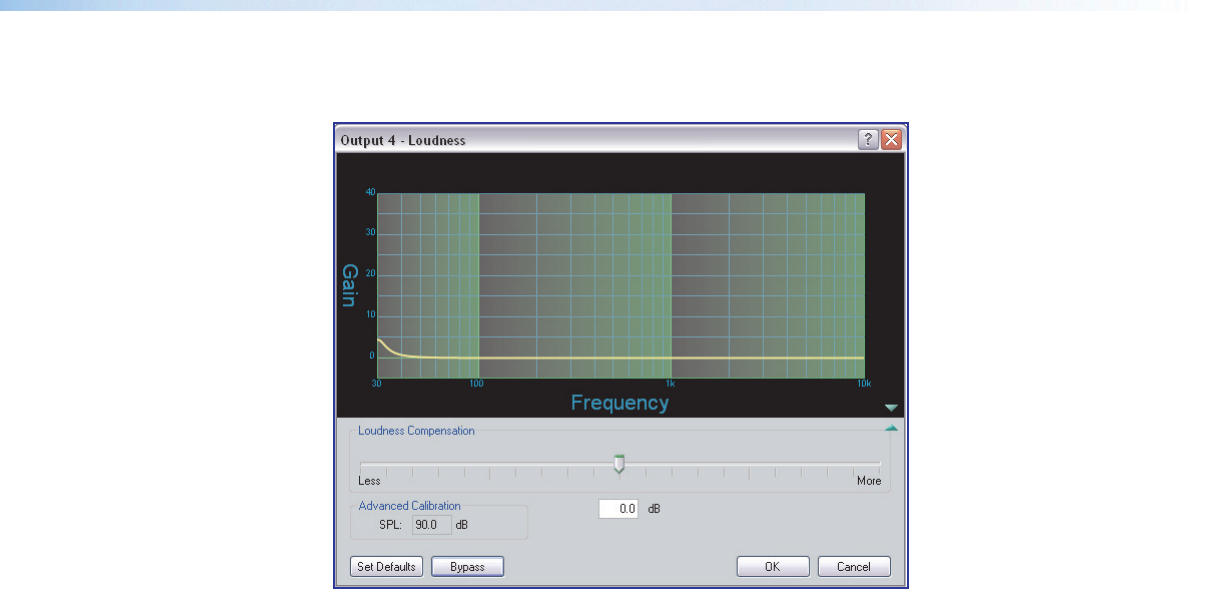
When bypassed, the graph displays the current filter curve as a dotted line. When bypass
is disengaged, the current filter curve is displayed as a solid line.
Figure 36. Loudness Dialog Dialog box
The Loudness dialog box contains the following elements:
1. Graph — displays the compensation curve being applied to the signal. These curves
are read-only, and are not adjustable from the graph.
2. Compensation Adjustment slider — from a center zero-point, the user can slide to
the left for less loudness compensation (filter curve is reduced), or to the right for more
(filter curve is increased). The slider position is translated into adB value, displayed in
the compensation readout box contained in the Advanced Calibration section. The
slider has a 48dB (
±
24dB) range.
3. Advanced Calibration — The calibration box provides a value that corresponds
to the position of the compensation adjustment slider. The SPL box displays the
summed value of the slider and the preceding trim control.
Calibrating Loudness
The user may fine-tune the amount of loudness compensation using the compensation
adjustment slider and adjusting “by ear,” or by measuring SPL levels in a particular room,
then using the slider to adjust the loudness filter relative to the SPL of the room and
system gain structure.
Before calibrating loudness, set up the system gain structure (see “Optimizing Audio
Levels” on page101). A pre-recorded track of pink noise or pink noise from a signal
generator is preferable for this purpose. Program material may also be used (using familiar
material is recommended).
If using a signal generator set it to output –10dBu, then set the input gain of the
DSPConfigurator so the input meter reads –20dBFS. If using a recorded source the pink
noise should be recorded at –20dBFS and the player output level setting control set to
maximum, or 0dB of attenuation. For program material, set the input level to meter at
approximately –15dBFS, with peaks safely below 0dBFS.
DMP128 • Software Control 61



